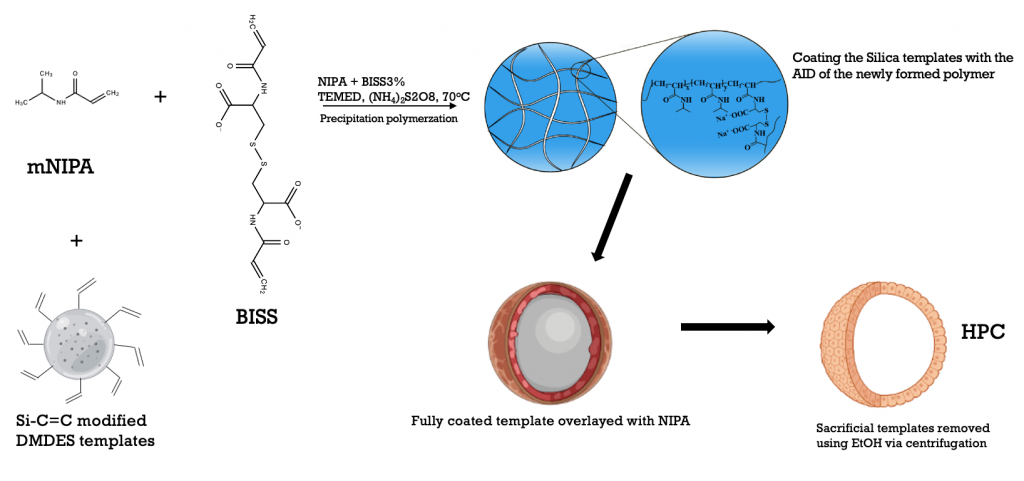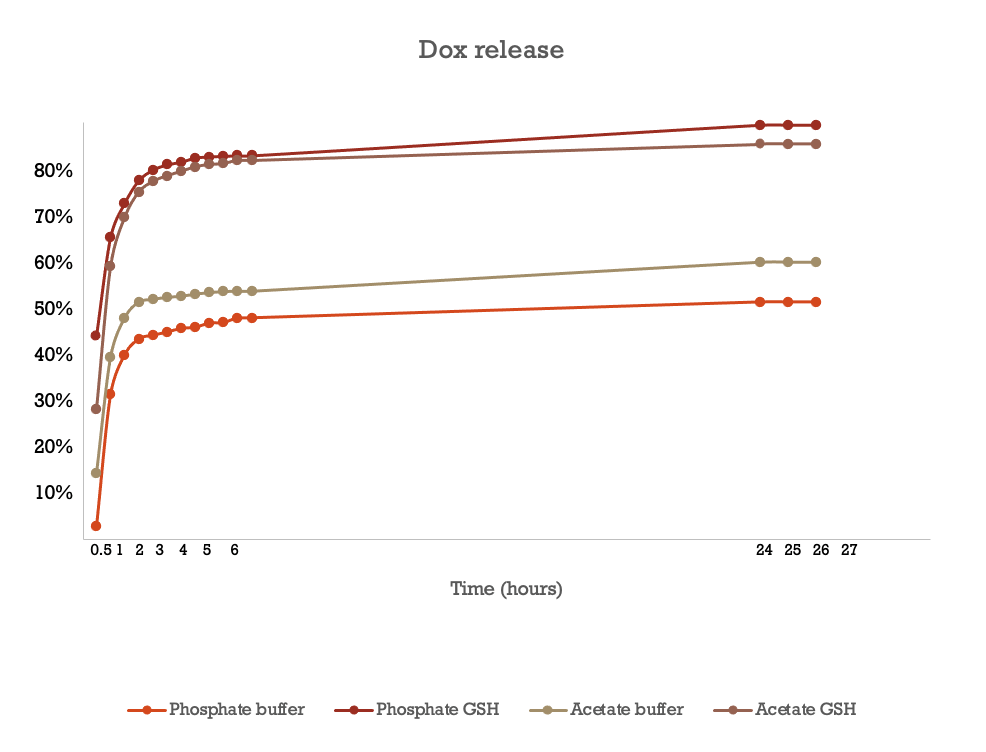Abubakar Muhammad
Section of Inorganic and Analytical Chemistry
Laboratory of Environmentally Sensitive Polymer Materials and Composites
Thermoresponsive, pH and redox-sensitive polymer capsules as drug carriers
Muhammad Sagir Abubakar
Supervisor: dr hab. Marcin Karbarz
Co-supervisor: dr Marcin Mackiewicz
Cancer being one of the major causes of mortality worldwide have sparked the development of alternative therapeutic methods. Polymer based drug delivery systems designed with the advantage of their chemical responses to stimuli have received a lot of attention in the recent years [1-4]. The design is guided by a thorough understanding of the basis of tumor initiation and progression. In this experiment, poly (N-isopropyl acrylamide), pNIPA-based capsules composed of a hollow core with high drug loading capacity was designed. Owing to its stimuli responsiveness, pNIPA hydrogels have demonstrated appreciable properties that could enhance an effective delivery of chemotherapeutics to cancer cells. Hollow poly (N-isopropyl acrylamide), pNIPA-based capsules were prepared by precipitation polymerization of N-isopropyl acrylamide on sacrificial monodisperse, 3-(trimethoxysilyl) propyl methacrylate (MPS) modified, dimethyldiethoxysilane (DMDES) emulsion templates. To avoid using toxic solvents, ethanol was successfully utilized in the removal of the templates. N, N′ bis(acryloyl)cystine, (BISS) crosslinked pNIPA hydrogels proven to have increased stability, pH sensitivity, and ionic strength over ones crosslinked with the commercially available N, N′-bis(acryloyl)cystamine, (BAC) [5]. Hence the use of BISS crosslinker. The capsules obtained are composed of a hollow core and a well cross-linked polymer networks with high sensitivity to pH, temperature, and glutathione (GSH) which is a classical and suitable drug delivery system (DDS) for cancer chemotherapeutics. Doxorubicin was selected as a model chemotherapeutic, loaded in the capsules, and examined in-vitro at varied pH levels in acetate and phosphate buffer systems with and without GSH. The HPC showed a high loading capacity, flexibility to incorporate other polymers where necessary, and able to carry other kind of drugs. The in-vitro drug release studies demonstrated efficient drug release (ca. 80% in less than 6 h). p(NIPAM)-based capsules are biodegradable and biocompatible and efficient DDS.
Experimental Scheme
 Figure 1: Preparation of Silica emulsion templates
Figure 1: Preparation of Silica emulsion templates

Figure 2: Full capsule synthesis after Silica Si-C=C modification
Graph of Invitro Drug Release

References:
[1] Ji, Y., Liu, J. & Ji and Junqiu Liu, Y. Hollow Polymer Capsules for Drug Delivery. General Chemistry 7, 200009–200009 (2021).
[2] Rodríguez-Ramos, A. et al. Design of Polymeric and Biocompatible Delivery Systems by Dissolving Mesoporous Silica Templates. International Journal of Molecular Sciences 21, 9573 (2020).
[3] Mackiewicz, M. et al. Degradable, thermo-, pH- and redox-sensitive hydrogel microcapsules for burst and sustained release of drugs. International Journal of Pharmaceutics 569, 118589 (2019).
[4] Tang, L. et al. Poly(N-isopropylacrylamide)-based smart hydrogels: Design, properties and applications. Progress in Materials Science 115, 100702 (2021).
[5] Mackiewicz, M. et al. Nanohydrogel with N,N′ -bis(acryloyl)cystine crosslinker for high drug loading. International Journal of Pharmaceutics 523, 336–342 (2017).

